АлександрД
Contributor
Sometimes I met here remarks or questions about diving in Soviet Union.
I will start briefly to explain here information about single solid Soviet diving society - ДОСААФ (DOSAAF)
Добровольное Общество Содействия Армии Авиации и Флоту (Volunteer Society for Cooperation with the Army, Aviation, and Navy)
It has long history, but as DOSAAF itself (with this name), it was builded up in 1951.
This organisation was dedicated to educate in sport ways for our population (in perspective to use it in army). But not only in standard athletic sports, but also in many others, like sport gunfighting, light aviation, skyjumping, boating, car driving, radiotechnics, and sure - diving.
some historical information you can read here
By DOSAAF request in the 1957 was developed first soviet aqualung (scuba) - AVM-1 by Soldatenkov and Kitaev and in 1960s it goes to mass production.
Diving education in Soviet Union was very rich and long, it takes 72 hours of theory, 16 hours of swimming plus 10 dives with scuba. In the end you should be pass exam by 5 of 52 questions (related to: equipment (with real repair or adjustment of scuba), accident prevention, diving medicine, accident situations, signals) or similar.
In the end you will get Certificate of Underwater swimmer(diver).
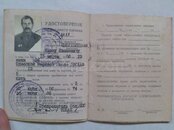
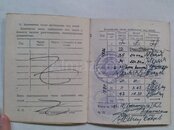
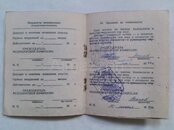
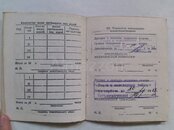
It contains: results of passing exam for technisc and safety, medical statements, and records about underwater hours.
We had many books, related to diving. (here is not all of such books)
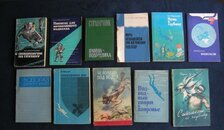
There was not a single educational book, but all course content was same, as published in the brief-book.
Also was very popular magazine, related to diving and fish hunting - Спортсмен-подводник
By many peoples was written articles for this magazine. Even my fathers friend had published there one trick, how to made mask with lenses, and this article my fathers brings to the main editor by hands-to-hands
In the Minsk (Belarussia) they have big museum, DOSAAF related - DOSAAF History Museum in Minsk

I will try to continue this topic, to explain may other sides of diving in Soviet Union.
I will start briefly to explain here information about single solid Soviet diving society - ДОСААФ (DOSAAF)
Добровольное Общество Содействия Армии Авиации и Флоту (Volunteer Society for Cooperation with the Army, Aviation, and Navy)
It has long history, but as DOSAAF itself (with this name), it was builded up in 1951.
This organisation was dedicated to educate in sport ways for our population (in perspective to use it in army). But not only in standard athletic sports, but also in many others, like sport gunfighting, light aviation, skyjumping, boating, car driving, radiotechnics, and sure - diving.
some historical information you can read here
By DOSAAF request in the 1957 was developed first soviet aqualung (scuba) - AVM-1 by Soldatenkov and Kitaev and in 1960s it goes to mass production.
Diving education in Soviet Union was very rich and long, it takes 72 hours of theory, 16 hours of swimming plus 10 dives with scuba. In the end you should be pass exam by 5 of 52 questions (related to: equipment (with real repair or adjustment of scuba), accident prevention, diving medicine, accident situations, signals) or similar.
In the end you will get Certificate of Underwater swimmer(diver).




It contains: results of passing exam for technisc and safety, medical statements, and records about underwater hours.
We had many books, related to diving. (here is not all of such books)

There was not a single educational book, but all course content was same, as published in the brief-book.
Also was very popular magazine, related to diving and fish hunting - Спортсмен-подводник
By many peoples was written articles for this magazine. Even my fathers friend had published there one trick, how to made mask with lenses, and this article my fathers brings to the main editor by hands-to-hands
In the Minsk (Belarussia) they have big museum, DOSAAF related - DOSAAF History Museum in Minsk
I will try to continue this topic, to explain may other sides of diving in Soviet Union.



 thanks
thanks